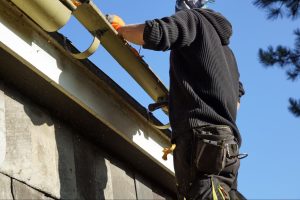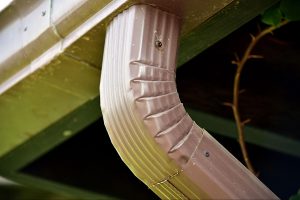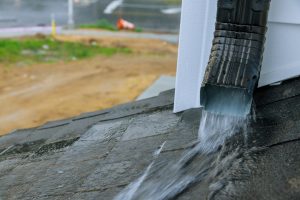Clogged gutters affect curb appeal and can cause significant damage if left unattended. Still, many homeowners don’t think about gutter cleaning until something breaks. The problem isn’t just forgetting; it’s also not knowing what the service should cost. Getting clear on pricing now helps avoid bigger bills and last-minute headaches later.
How Much Does Gutter Cleaning Cost on Average?
Even a basic gutter cleaning job varies in price depending on a few core details. While some homeowners pay less than $100 per visit, others can pay over $400. The cost depends on the home’s height, square footage, and location. Understanding the average range helps you prepare and avoid getting overcharged.
National Averages and Price Ranges
Across the U.S., most gutter cleaning services charge between $0.70 and $1.30 per linear foot. That means a typical one-story home with 150 feet of gutter could cost between $100 and $200. For two-story houses, the rate usually increases due to the added height and complexity. Expect those jobs to range from $150 to $350. In cities with higher labor costs, prices may push higher than that range.
Cost by Cleaning Method
Different cleaning techniques also affect pricing. Hand-cleaning tends to cost less but takes longer. Vacuum systems or power washers may cost more, but they clean faster and more thoroughly. Some companies include debris disposal and downspout flushing in their rates. Other providers may charge additional fees, so it’s wise to clarify what’s included before booking.
What Factors Affect Gutter Cleaning Prices?
Every home is different, and so is every gutter job. Companies consider more than just length; they look at your roof, debris, and how hard the work will be. That’s why two homes on the same block can get two different quotes. Knowing what drives those differences gives you better control over your budget.
Home Height and Roof Design
A tall house isn’t just more challenging to clean and riskier. Two- and three-story homes require special ladders and safety equipment. Roof pitch matters too, especially if it’s steep or has odd angles. These variables increase the work duration and demand more cleaning experience. Naturally, the added labor affects the bottom line.
Gutter Condition and Past Maintenance
Clean gutters are quicker to maintain than those packed with sludge. Expect higher costs if your gutters haven’t been touched in a year or two. Professionals must clear clogs, scoop out buildup, and sometimes flush mold or algae. Bad joints or sagging sections take even longer to clean. Regular upkeep saves you from these additional fees.
Tree Coverage and Surroundings
If your house is near trees, your gutters likely fill up quickly. Pine needles, leaves, and twigs clog gutters quickly in wooded areas. Due to frequent debris buildup, homes surrounded by trees often need gutter cleaning several times a year. Moss and roof debris also increase labor time, resulting in more trips and higher service charges.
Length and Accessibility of Gutters
Longer gutter systems require more work, even if they’re easy to reach. But when ladders must be moved repeatedly, the job slows down. Gutters above patios, overhangs, or garden beds can also complicate things. Tight spaces or blocked walkways increase the difficulty. These access issues usually increase the service quote.
How Often Should You Clean the Gutters?
Gutter cleaning isn’t a once-a-year thing for every home. Your location, roofline, and nearby trees all impact how often you’ll need it. Getting the timing right helps prevent damage and reduce long-term expenses. Sticking to a smart cleaning schedule also keeps each visit less costly.
Seasonal Cleaning Frequency
Fall and spring are the busiest times for gutter cleaners, when trees drop the most debris and gutters clog fast. Scheduling cleanings twice a year is ideal for most homes. Some houses near heavy tree cover may need three to four visits. Skipping cleanings often leads to more significant, costly problems.
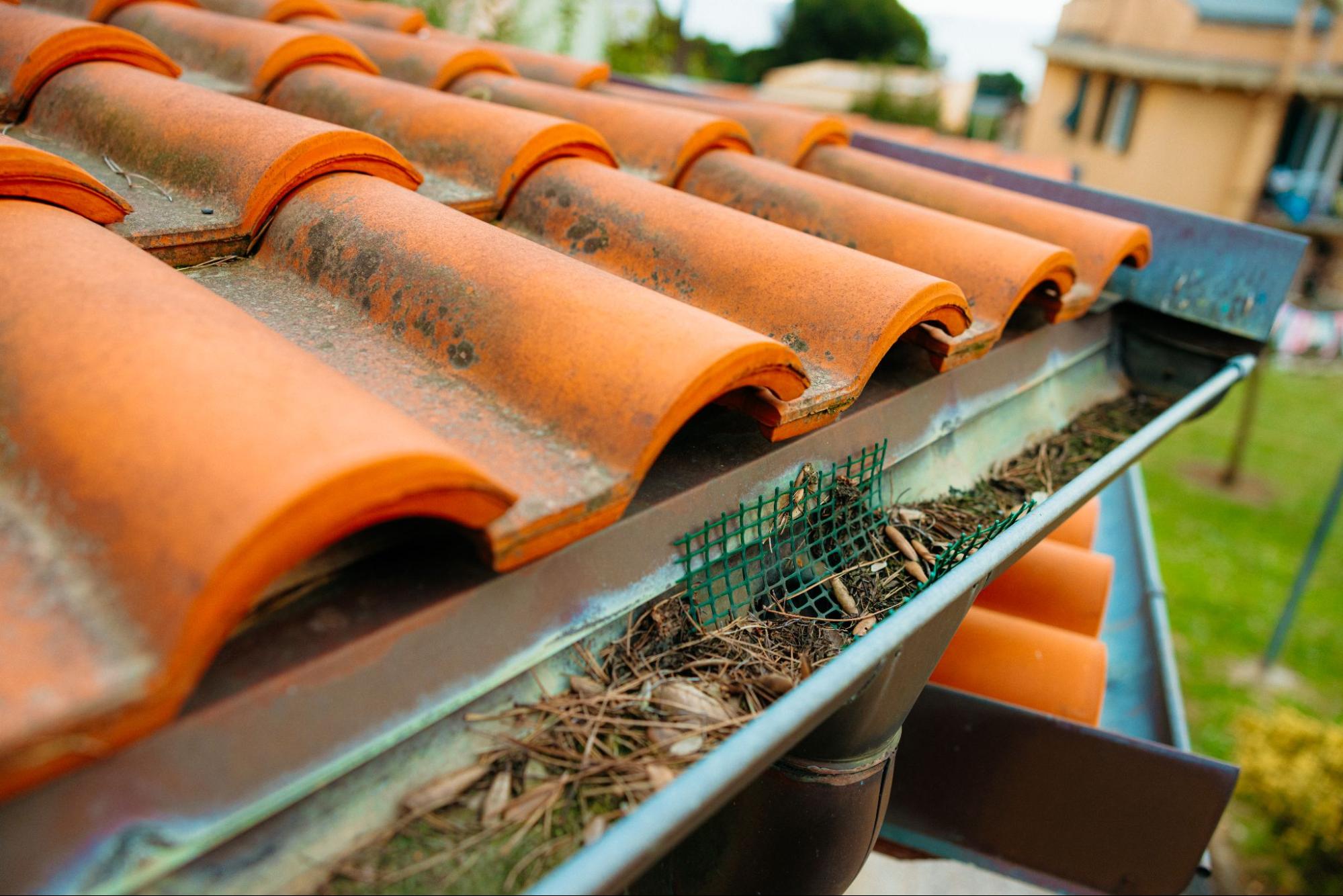
Local Climate and Rainfall
Wet regions like the Pacific Northwest require more frequent cleanings. Constant rainfall can expose minor clogs and cause overflows quickly. Dry areas like the Southwest might go longer between cleanings. However, wind can blow sand, dust, or leaves into gutters even in dry climates. The local weather directly impacts how soon your gutters fill again.
DIY vs. Professional Gutter Cleaning Costs
Some homeowners try to cut costs by cleaning their gutters themselves. While it’s tempting, there’s more to this decision than saving money. Safety, tools, and time play significant roles. Comparing real-world risks and trade-offs helps you decide what’s best for your situation.
Risks and Hidden Costs of DIY Gutter Cleaning
Buying a ladder, gloves, and a scoop might cost $50–$100 up front. But the real cost lies in time and physical risk. Falls from ladders are a top cause of injury for homeowners. You may also damage your roof, gutters, or siding during cleaning. If you miss a clog, the repair costs could outweigh any savings.
Why Professional Gutter Cleaning Is Worth It
Professionals show up with experience, equipment, and insurance. They finish the job faster and with less mess. Many also inspect for early signs of damage. Their fee includes hauling debris, flushing downspouts, and double-checking tricky corners. Paying more may save you from major repairs in the long run.
Extra Services That Affect Gutter Cleaning Prices
Some gutter cleaning jobs aren’t just about removing leaves. Add-on services often raise the total bill. However, many of these extras offer extra value if timed well. Knowing what’s optional and what’s essential helps you choose wisely.
Installing Gutter Guards
Gutter guards help block leaves and debris from entering your gutters, which can reduce how often cleanings are needed. While they require an upfront investment, the long-term savings on maintenance may be worth it. Costs vary depending on the material and installation complexity. Basic options are more affordable but may need replacement or cleaning sooner. Remember that guards don’t eliminate the need for cleaning entirely—they just make it less frequent.
Cleaning and Repairing Downspouts
Downspouts can clog quickly, especially in aging gutter systems. A blocked downspout can lead to overflow and water damage even with clean gutters. Some service providers may charge an additional fee for clearing or repairing them, but the extra cost is often a wise investment. Keeping downspouts clear ensures proper drainage and helps protect your home’s foundation from costly issues over time.
Small Repairs or Roof Inspections
Minor fixes often occur during a cleaning. For an added fee, loose fasteners, cracks, or rust spots can be repaired on the spot. Some companies offer bundled inspections with their cleaning service. That can identify early leaks or shingle issues. While not always necessary, it can help avoid larger roof repair bills later.
Roof Debris or Moss Removal
If your roof collects moss or branches, they can directly impact the gutters. Cleaning these surfaces adds time and cost to the visit. Moss also holds water, adding weight and decay risk to your roof. Removing it helps both the gutter and roof performance. Ask your provider if this is part of their standard package.
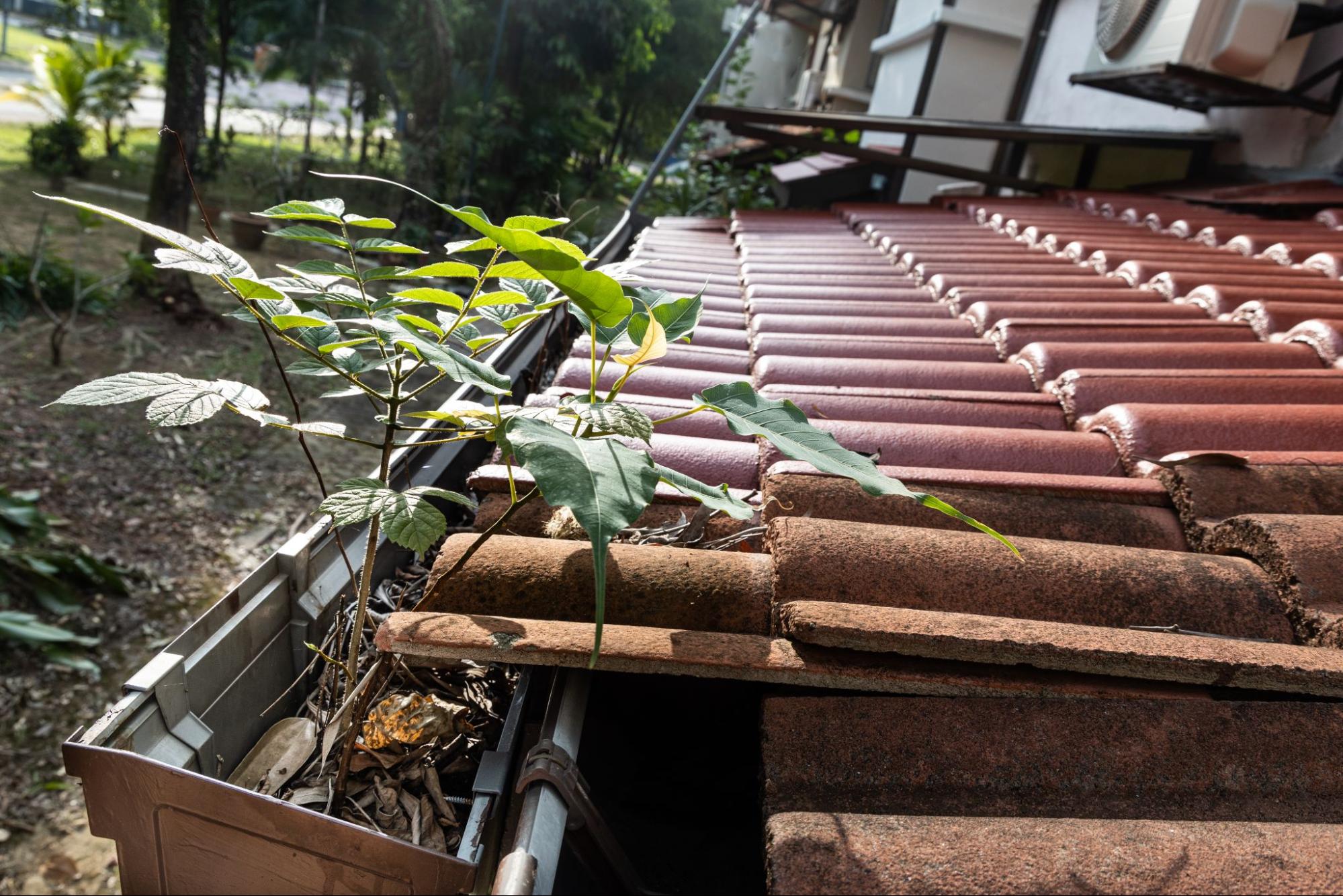
Cost of Gutter Cleaning Across Regions
Location drives price in surprising ways. It’s not just about your zip code but the weather, labor rates, and access to local providers. Understanding regional differences helps set expectations before booking a service.
Urban vs. Suburban and Rural Areas
Urban homeowners often pay more due to higher labor rates. However, they may benefit from a larger selection of providers. Rural homeowners may pay travel fees if services aren’t nearby. Some companies charge mileage or minimum job fees in remote areas. Location accessibility plays into every quote.
Geographic Factors That Influence Pricing
Gutter cleaning prices vary depending on where you live. Coastal states and urban areas tend to have higher rates, while smaller towns and inland regions often see more affordable pricing. Due to added complexity, areas with older homes or steep roofs may cost more. Meanwhile, regions prone to storms or hurricanes might require more frequent cleanings, raising your annual expense even if each visit is reasonably priced.
How to Get the Best Price for Gutter Cleaning
Getting a fair price takes more than calling the first service you find. A few smart steps can help you lock in better rates. Even small savings add up if you clean gutters multiple times a year. Planning also keeps your gutters in better shape between cleanings.
Compare Quotes from Multiple Providers
Don’t settle for the first quote. Get quotes from at least three providers and compare what each service includes. Some might quote a low base price but charge extra for disposal or inspection. Others offer flat rates that include everything. Reading reviews can also reveal if their service is worth the cost.
Ask About Bundled Home Maintenance Deals
Many exterior service companies clean gutters, pressure wash siding, and more. Booking multiple services at once often earns a discount. Bundling roof and gutter cleaning might save 15–25%. It also makes scheduling easier and faster. Just make sure you’re not paying for services you don’t need.
Check for Seasonal and Off-Peak Discounts
Some companies offer price breaks during slow months. Winter or midsummer might be slower for bookings, so cleaners reduce rates. You can also get better slots and faster service. Scheduling during non-peak periods helps avoid delays. Ask upfront about any flexible timing deals.
Lock In a Fair Gutter Cleaning Cost Today
Gutter issues don’t wait, and neither should you. Getting a fair price now means fewer surprises and fewer headaches later. It’s not just about saving a few bucks; it’s about protecting your home from damage that costs far more. A reliable service at the right price is out there. Lock it in before a minor task turns into a significant repair.
Want more smart tips on protecting your home from water damage? Visit the Quality Rain Gutters, Inc. blog for expert advice and maintenance guides.


